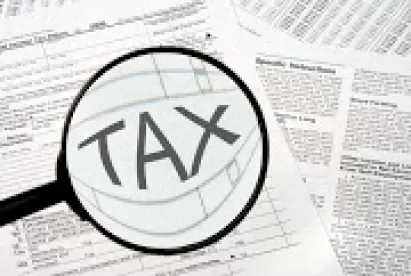Tax-exempt bond financing, an anticipated impact to philanthropic donations, repeal of the individual mandate, and taxation of highly compensated executives are among the changes for 2018.
US President Donald Trump recently signed H.R. 1, long-awaited tax reform legislation that will impact organizations working in healthcare. The following LawFlash highlights provisions affecting the healthcare industry and serves as an update to our previous LawFlash by addressing what changed and what remains in the final legislation.
Tax-exempt Municipal Bond Financing. While the final legislation retains the exclusion from gross income on private activity bonds, it repeals the exclusion on the advance refunding of bonds.
Charitable Deductions. The standard deduction nearly doubles from the current $6,500 (single)/$13,000 (couples) to $12,000 (single)/$24,000 (couples). So while the charitable deduction remains unchanged, the number of itemizing tax filers is expected to decline along with a corresponding drop in the value of the charitable deductions being claimed on tax returns. The final legislation also increases the limitation for cash contributions to healthcare organizations that are 501(c)(3) public charities to 60% of a donor’s adjusted gross income (AGI). Both provisions apply to taxable years beginning after December 31, 2017 and before January 1, 2026.
Medical Expense Deductions. The final tax legislation maintains the out-of-pocket medical expense deduction and temporarily expands it for tax years 2017 and 2018 by lowering the current threshold for qualifying for the deduction from 10% of AGI to 7.5%.
The Individual Mandate. The individual mandate is eliminated by reducing the tax penalty to zero for those who do not comply starting in 2019.
Executive Compensation. The final tax legislation imposes a 21% excise tax on healthcare organizations exempt from tax under Section 501(a) of the Internal Revenue Code, including Section 501(c)(3) and 501(c)(4) organizations, for compensation in excess of $1 million as well as certain excess parachute payments paid to a “covered employee.” A covered employee is defined as an employee who is one of the five highest paid employees or who was a covered employee of the organization (or a predecessor) for any preceding taxable year beginning after December 31, 2016. There is an exception for compensation paid to licensed medical professionals, including physicians, nurses, and veterinarians, that is directly related to the performance of medical or veterinary services. The exception does not apply to compensation paid to these individuals in any other capacity. Special rules apply to compensation paid by related entities.
Medical and Scientific Education. Gone from the final tax legislation are two House bill provisions that would have eliminated the deduction of student loan interest and taxed as income the tuition waivers graduate students receive for teaching and research.
Federally Mandated Cuts to Medicare. As discussed in our previous LawFlash, the $1.5 trillion tax reform legislation triggered sequestration, a measure mandating automatic cuts to federal programs under the statutory Pay-As-You-Go-Act of 2010 (PAYGO)—including a $25 billion reduction to the Medicare program. Fortunately, on December 22 President Trump signed a bipartisan continuing resolution to fund the federal government through January 19, 2018 that also included a waiver of the PAYGO rules, so these cuts will not go into effect.
Unrelated Business Income Tax (UBIT). The final tax legislation requires that tax-exempt hospitals and healthcare organizations with more than one unrelated trade or business compute UBIT separately with respect to each trade or business and without regard to the specific deduction allowed under Section 512(b)(12). UBIT for a taxable year is the sum of the amounts for each unrelated trade or business, less the specific deduction. A net operating loss deduction is allowed only with respect to a trade or business from which the loss arose. A special transition rule provides that net operating losses arising in a taxable year beginning before January 1, 2018 that are carried forward to a taxable year beginning on or after such date are not subject to the provision.
The final legislation also subjects to UBIT the amount of certain fringe benefits for which a deduction is disallowed, including qualified transportation fringe benefits, any parking facility used in connection with qualified parking, and on-premises athletic facilities, unless the amount is directly connected with a regularly carried-on unrelated trade or business.
Kathleen P. Rubenstein also contributed to this article.



 />i
/>i

